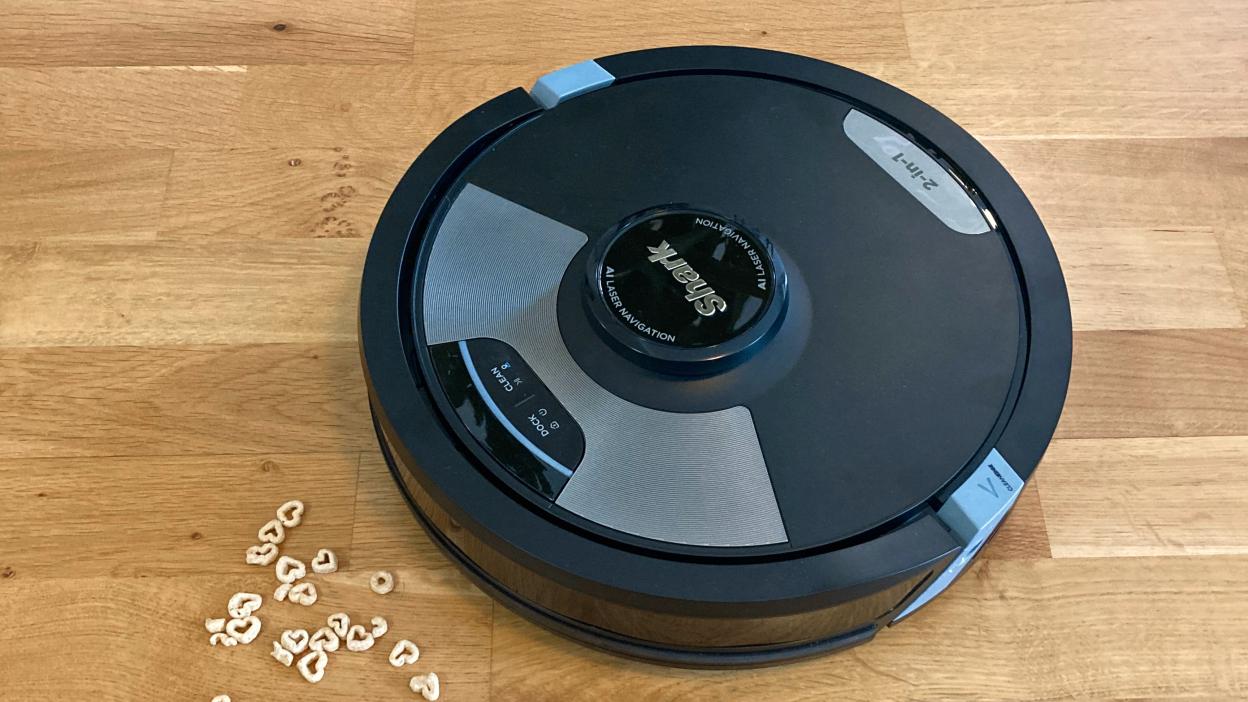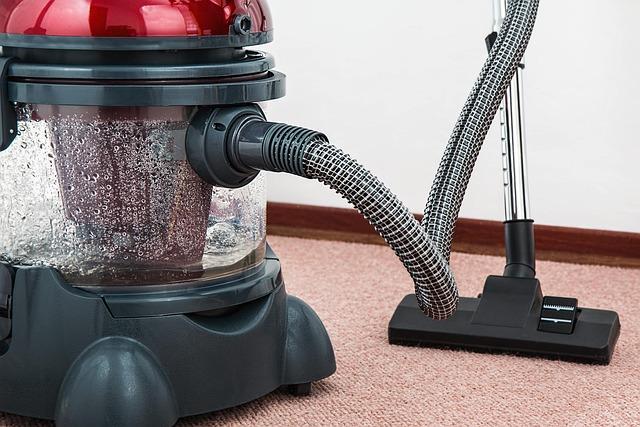In an era where technology seamlessly integrates into our lives, the humble vacuum cleaner has undergone a remarkable transformation, evolving into a sophisticated AI-powered robot. These compact cleaning companions promise not just to suck up dust and debris, but to intelligently navigate our homes, learn our habits, and adapt to our unique cleaning needs. As enticing as these automated gadgets sound, they come with a price tag that raises an important question: Are they genuinely smarter than traditional vacuums, or are we merely paying a premium for features that may not significantly enhance our cleaning experience? In this exploration, we’ll delve into the capabilities, costs, and real-world performance of AI-powered robot vacuums to help you determine whether these futuristic machines are worth the investment.
Understanding the Technology Behind AI-Powered Robot Vacuums
AI-powered robot vacuums utilize an intricate blend of technologies to navigate and clean your home efficiently. At the core of these devices lies machine learning, which allows them to gather data about your surroundings and adapt their cleaning patterns. This technology enables the vacuum to map out your home layout and recognize obstacles, ensuring they don’t just randomly bump around. Additionally, they typically incorporate LiDAR (Light Detection and Ranging) or cameras for enhanced navigation, allowing them to create precise maps and optimize cleaning routes by distinguishing between different types of surfaces.
Embedded within these smart appliances are sensors that detect dirt levels, enabling them to focus more effort in high-traffic areas. Here are some key components that contribute to their functionality:
- Path Planning Algorithms: These help the robot determine the most efficient route.
- Obstacle Detection: This feature prevents the vacuum from colliding with furniture or falling down stairs.
- Remote Control Applications: Users can schedule cleanings and monitor performance from their smartphones.
- Integration with Smart Home Systems: Compatibility with devices like Amazon Alexa or Google Home allows for seamless voice control.

Evaluating Performance: Do Smart Features Justify the Price?
When it comes to evaluating the performance of AI-powered robot vacuums, the question of whether their smart features truly justify a hefty price tag looms large. Many consumers are often dazzled by functionality like mapping capabilities, sophisticated obstacle avoidance, and the ability to integrate with smart home systems. These features can significantly enhance cleaning efficiency and user convenience, leading to a more seamless household experience. However, assessing whether these advanced capabilities deliver adequate value can be challenging. It is essential to consider how often these features are utilized and if they contribute to a tangible improvement in cleaning effectiveness or simply add extra dollars to the bottom line.
To make a more informed decision, potential buyers should weigh the performance metrics against the price premium. Here are key factors to consider:
- Battery Life: Does the vacuum run long enough to cover your space effectively?
- Suction Power: Is it strong enough to pick up various types of debris?
- Smart Features: Are functions like app control and scheduling genuinely beneficial or just fluff?
- Maintenance Needs: Will the advanced system require substantial upkeep?
The following table provides a quick comparison of popular models across these categories:
| Model | Battery Life | Suction Power | Smart Features | Maintenance |
|---|---|---|---|---|
| Model A | 120 mins | 2000 Pa | App Control, Mapping | Low |
| Model B | 90 mins | 2500 Pa | Scheduling, Voice Control | Medium |
| Model C | 150 mins | 1500 Pa | Basic Navigation | Low |
By analyzing these critical elements, consumers can better determine whether the smart features of a robot vacuum translate into genuine value or if they simply inflate the cost. Ultimately, the decision to invest in an AI-powered robot vacuum hinges on personal preferences and cleaning habits, leaving room for a range of opinions on whether the added features merit the higher price point.

User Experience and Satisfaction: Is Complexity Worth It?
In the realm of AI-powered robot vacuums, the balance between complexity and usability is a hot topic. Users often grapple with how much technology is genuinely enriching their cleaning experience versus how much is simply complicating it. High-end models come equipped with features like smart mapping, voice control, and scheduling capabilities, which allow for unprecedented control and convenience. However, these complex functionalities can overwhelm some users, leading to frustration instead of satisfaction. It’s crucial to assess whether such sophistication translates to a noticeably cleaner home or merely serves as a trendy selling point that doesn’t meet the practical needs of everyday consumers.
To further delve into this dilemma, consider the following features and their impact on user experience:
| Feature | Perceived Value | User Feedback |
|---|---|---|
| Smart Mapping | High efficiency, less manual work | Positive, but requires initial setup |
| Voice Control | Convenient, hands-free operation | Varied; reliant on ecosystem compatibility |
| Automatic Recharging | Continuous cleaning without user intervention | Generally favorable, but battery life matters |
As users become more discerning about their options, they must weigh the appeal of such technological enhancements against the potential for increased complexity. Would a streamlined model with fewer features offer a simpler, more rewarding cleaning routine? Ultimately, the key lies in identifying personal preferences and leveraging technology that aligns with individual needs while ensuring that user satisfaction remains paramount.

Making an Informed Choice: Recommendations for Smart Vacuum Shoppers
Choosing the right vacuum for your home can feel overwhelming, especially with the deluge of options available on the market. To navigate this maze effectively, consider several key factors that can guide you toward an intelligent investment. First, assess your cleaning needs; if you have pets or live in a space with a variety of floor types, look for models that specifically cater to these situations. Evaluating battery life, suction power, and smart features will also ensure that you’re not only getting a vacuum that looks sophisticated but one that performs effectively. Don’t shy away from seeking out user reviews or watching video demonstrations to see the reinforcements of these features in action.
When it comes to budgeting, remember that price doesn’t always equate to performance. Before falling for high-priced models, conduct a comparative analysis. Here are some suggestions to keep in mind while browsing:
- Read expert and consumer reviews: A model might sound great on paper, but real user experiences can reveal crucial performance insights.
- Test compatibility with your smart home: If you already use AI technology at home, ensure the vacuum integrates seamlessly.
- Check the warranty and support: A solid warranty can save you money and hassle in case of unexpected issues, making it a crucial factor.
| Feature | Budget Models | Premium Models |
|---|---|---|
| Suction Power | Decent | High |
| Battery Life | Short | Extended |
| Smart Features | Basic | Advanced |
| Price Range | Under $300 | Over $500 |
To Wrap It Up
As we navigate the bustling intersection of technology and everyday life, AI-powered robot vacuums stand out as a prime example of innovation’s dual nature. On one hand, they promise a smarter, more hands-free cleaning experience, leveraging complex algorithms to map our homes and adapt to our unique cleaning needs. On the other hand, the questions of cost-effectiveness and tangible benefits linger like dust in the corners of our living rooms.
In exploring whether these gadgets are genuinely smarter or merely a premium-priced luxury, it becomes clear that the answer is nuanced. While they can undoubtedly enhance convenience and offer sophisticated features, understanding their true value hinges on individual lifestyle and home dynamics. Ultimately, the decision to invest in an AI-powered vacuum may come down to personal priorities: do you seek the thrill of cutting-edge technology, or are you content with traditional methods that get the job done?
As you weigh the options, consider both the efficiency these robots promise and the implications for your wallet. In the realm of home cleaning, the future may be automated, but it remains rooted in the simple human desire for a clean, comfortable space. Choose wisely, and let the sparks of technology shine bright in your home.




